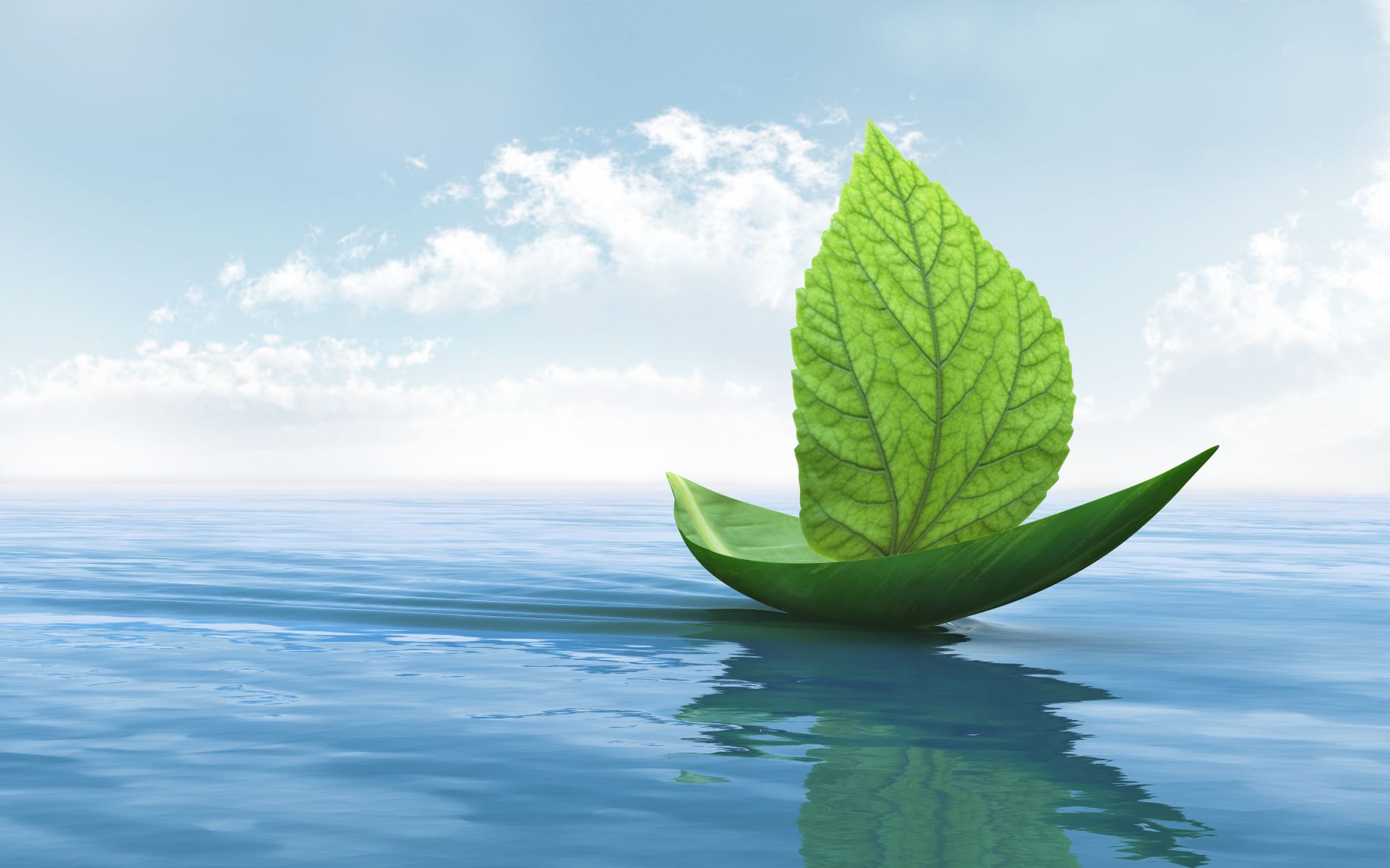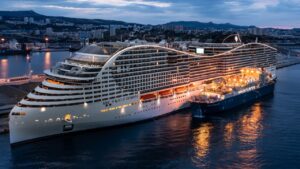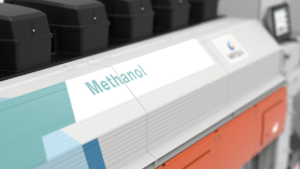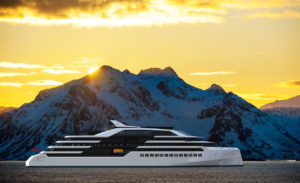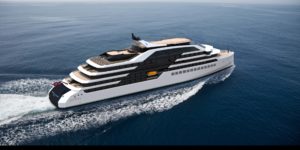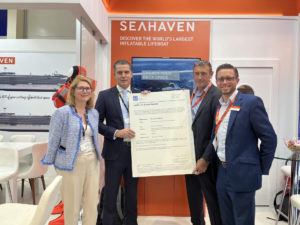The world’s biggest cruise operators are exploring a wide range of technologies that will take them towards ambitious decarbonisation goals, writes Gavin Lipsith in the second article in Fathom’s ‘Clean Cruising’ series.
Attempts to reduce emissions from today’s big cruise vessels have been problematic. The most popular option for current vessels, installing scrubbers and running on heavy fuel oil, meets opposition from ports in the form of scrubber water discharge standards, and from environmentalists for continuing the use of high sulphur fuel oil. The most popular option for upcoming newbuilds, LNG propulsion, has a greenhouse gas impact that is highly debatable given methane slip from the four-stroke engines used by cruise vessels.
Both solutions were originally adopted as pro-active measures to counter air pollution, and put cruise lines at the vanguard of the environmental regimes around SOx and NOx emissions. But as the focus shifts to tighter regulation of greenhouse gas emissions, neither holds the full answer to meeting IMO’s targets – or indeed cruise lines’ own ambitions.
Carnival Corporation aims to halve its greenhouse gas emissions by 2030 and have a fully carbon-neutral fleet by 2050. Royal Caribbean Cruise Lines plans to launch its first net-zero vessels by 2035 and be carbon neutral companywide by 2050. Both goals reach beyond IMO’s current targets. And both companies see building their LNG-fuelled fleets as key to achieving those goals, providing a platform from which to transition to clean fuels when they become available. But that has not stopped investment in the technologies that will eventually take them to net-zero.
MSC bets on hydrogen
To underlay its pathway to reduced emissions, MSC Cruises embarked on a major energy efficiency drive last year. The group conducted trials of energy efficiency measures on MSC Grandiosa and was achieve an 8% reduction in emissions intensity compared to its design performance. This was achieved by monitoring the ship operations, as well as the efficiency of numerous systems throughout the ship, allowing the specific analysis of the energy profile.
“The leaner we can make our operations now, through efficiency improvements, the better position we will be in, to bridge the cost gap that we will see with new fuels, and to minimise the additional bunkering capacity needed,” says Andrea Crosetti, RCCL Energy Efficiency Management Officer.
In mid-2021 the company embarked on a collaboration with energy solutions provider SNAM and ship builder Fincantieri to investigate the design, construction and related hydrogen supply and bunkering requirements for a hydrogen-powered cruise ship. The year-long study will examine ship space to accommodate hydrogen technologies and fuel cells, technical parameters of onboard systems, assessing potential greenhouse gas emissions savings, and technical and economic analysis of hydrogen supply and infrastructure. Despite the current technical challenges and the lack of a proper supply chain for maritime use, MSC aims to operate a hydrogen fuelled cruise ship before 2030.
MSC is also collaborating with Cargill, Wärtsilä, Lloyds’ Register, academia and technology partners in Project CHEK, funded by the European Union’s Horizon 2020 research and innovation programme. The €10 million project running from 2021 to 2024, investigating a range of synergistic measures including hydrogen engines, drag reduction measure, and waste to energy solutions, with results shared throughout the maritime community.
With a focus on hydrogen fuel, research into fuel cells that can replace engine-generated electricity is another key area of research. Funding provided by the UK’s Department of Transport through its Clean Maritime Demonstration Competition is allowing MSC to partner with GE, CERES and Lloyds Register to study the feasibility of implementing solid oxide fuel cells, taking into consideration automation integration and risk management.
In November this year, the newbuild MSC World Europa will represent an important stepping stone to bringing all those technologies to fruition. Working with California-based Bloom Energy and shipyard Chantiers de l’Atlantique, the company will launch its first LNG-powered vessels, supplemented with solid oxide fuel cell (SOFC) technology. Bloom will fit the ship with 150 kilowatts of fuel cells and provide auxiliary power through liquefied natural gas (LNG).
According to Bloom, the fuel-flexible platform is designed to generate electricity 20 to 30 per cent more efficiently through a non-combustion electrochemical process when utilizing LNG compared to traditional marine combustion-based propulsion and auxiliary engines.

Royal Caribbean looks to LNG and beyond
The decarbonisation ambitions of Royal Caribbean Cruise Lines are represented by a forthcoming newbuild for its Silverseas line, Silver Nova, scheduled to enter service in mid-2023. The vessels will operate using a trio of power sources – fuel cells, batteries and dual-fuel LNG engines – that the company claims will make it the industry’s first-ever hybrid cruise ship to eliminate emissions while at port, even those without shore power.
The hydrogen-based fuel cell system will derive hydrogen through by reforming LNG. It will supplement the main energy supply and power the ship’s hotel operations (up to 4 MW) to help the ship achieve a claimed 60% reduction in carbon equivalent emissions compared to the fleet’s current dual-fuel diesel electric propulsion sources.
While MSC will begin with LNG fuel cells and transition to using hydrogen, Royal Caribbean is heading straight for hydrogen. Reforming hydrogen from LNG will mean it can bunker only LNG, thus avoiding the challenge of storing large quantities of hydrogen onboard.
Last year Royal Caribbean increased the number of LNG-fuelled ships in its newbuild plan and finalised supply chain options for the first three ships: Royal Caribbean International’s Icon of the Seas and Utopia of the Seas as well as Silver Nova. In its 2021 Sustainability Report, the company notes that LNG represents the best transitional pathway to decarbonisation given the lack of maturity of other alternative fuels and technologies.
“Understanding these alternative pathways will likely take three to four years, and the supply chain infrastructure to support them may not be available for even longer. While we may have confidence in the technology for an alternative fuel to power our ships, a sustainable supply chain infrastructure must be in place for us to move forward.”
Meanwhile, energy efficiency gains will come from LNG, a range of energy saving technologies and advanced data analytics. Last year the company began testing a new cloud platform to optimise ships’ energy efficiency and operations. The platform allows Royal Caribbean to dig into energy consumption at the equipment level using signals including pressure differentials, temperature, and power consumption.
Running scenarios using the data gathered, will help the cruise operator optimise energy consumption on everything from chillers to hotel facilities to auxiliary power. After a successful trial on Royal Caribbean International’s Odyssey of the Seas, the system has been installed on Wonder of the Seas and Celebrity Cruises’ Celebrity Beyond ships and will gradually be introduced to the wider fleet.

Carnival anticipates hybrid future
Carnival Corporation has made the most advances toward an LNG-fuelled fleet of any cruise operator, with four vessels in operation and a further seven to be in service by 2025. Its decarbonisation strategy will see this fleet extend further, eventually supplemented by fuel cells and batteries to cater for hotel load and port operations.
This investment in LNG will enable Carnival to transition first to carbon-neutral bio-LNG – the company is already investigating supply with Shell – and later to synthetic methane. While the company has not announced any concrete plans for other fuels, its fuel cell explorations point to a possible role for methanol.
In 2019, Carnival announced a joint project with Meyer Werft shipyard, Freudenberg Sealing Technologies and other partners funded by the German Federal Ministry of Transport and Digital Infrastructure. The Pa-X-ell2 project objective is develop fuel cells will be powered by hydrogen derived from methanol. But that does not mean a methanol-fuelled future is likely for the operator – subsequent fuel cell research from Carnival explores the use of LNG as a feedstock.
Hybridisation will certainly be an element of Carnival’s future fleet. One major research project is the EU-funded research project Nautilus, with partners including Chantiers d’Atalantique, MAN Energy Solutions and Lloyd’s Register. Short for Nautical Integrated Hybrid Energy System, the project aims at developing, evaluating and validating a cruise vessels energy system fuelled by LNG, supplemented by a solid-oxide fuel cell and battery hybrid genset. The aim of the project is to show, via a 60kWe fuel cell and battery demonstrator, how these gensets can gradually replace engines.
As for all cruise operates, intermediate steps in energy efficiency are a crucial element of Carnival’s decarbonisation. Earlier this year it announced a collaboration Wärtsilä, using the group’s Decarbonisation Modelling Service to establish an optimal decarbonisation path for the cruise ship Regal Princess.
A digital model will be created from operational data and machine-learning algorithms will deliver a detailed analysis of vessel operational data. The model will be used to simulate the impact of several technologies, including hybrid solutions and energy efficiency operating modes, to identify the best retrofit solutions.
While research driven by cruise operators focuses on bringing early-concepts such as batteries and fuel cells to the scale needed, there is a missing element to the jigsaw. Cruise ships will not be run on electrical energy alone, and the engines they need will have to be powered by alternative fuels.
As yet, that technology is unavailable or very immature. The challenges of developing alternative fuel technology and infrastructure for the cruise sector – a critical precursor to the zero-emission ships operators hope for by 2030 – will be the subject of the next instalment in this series.























